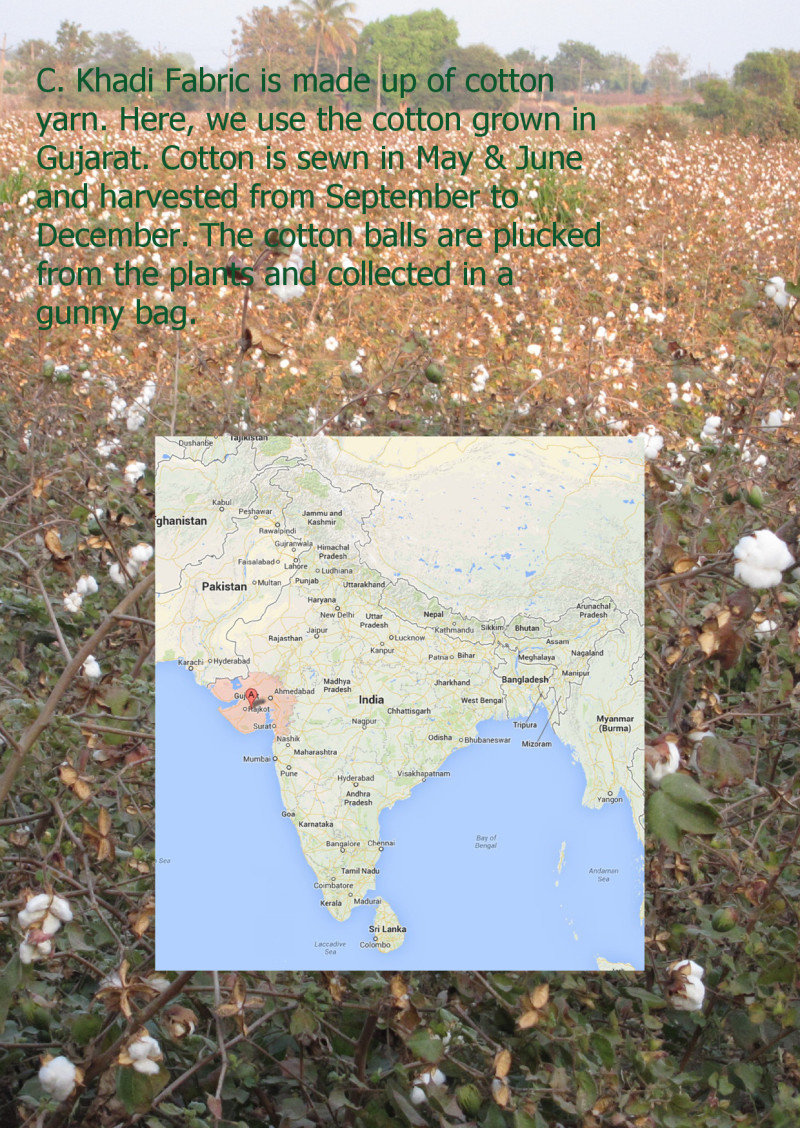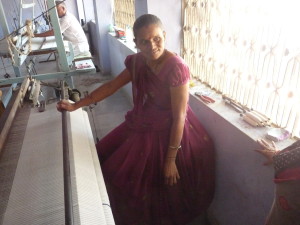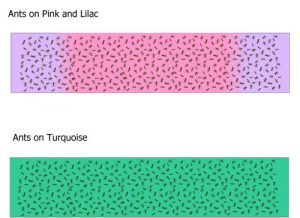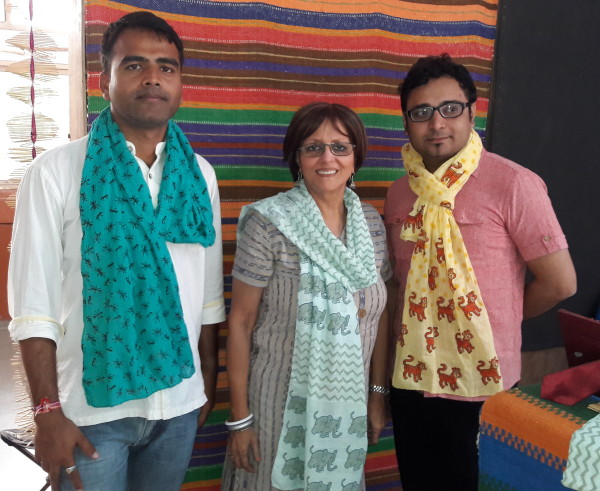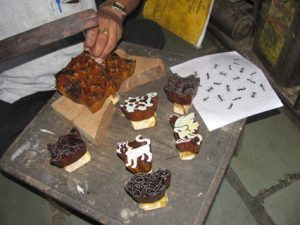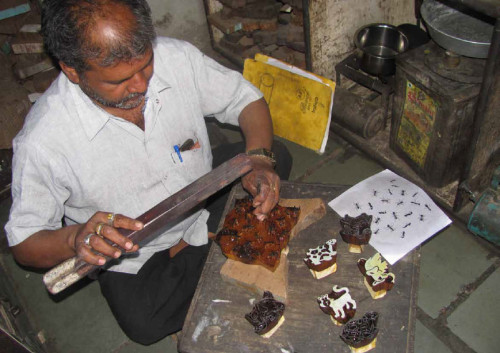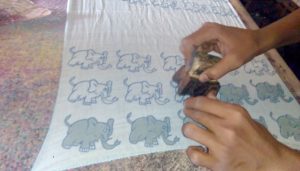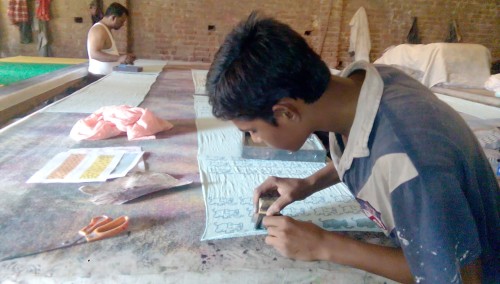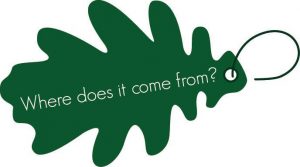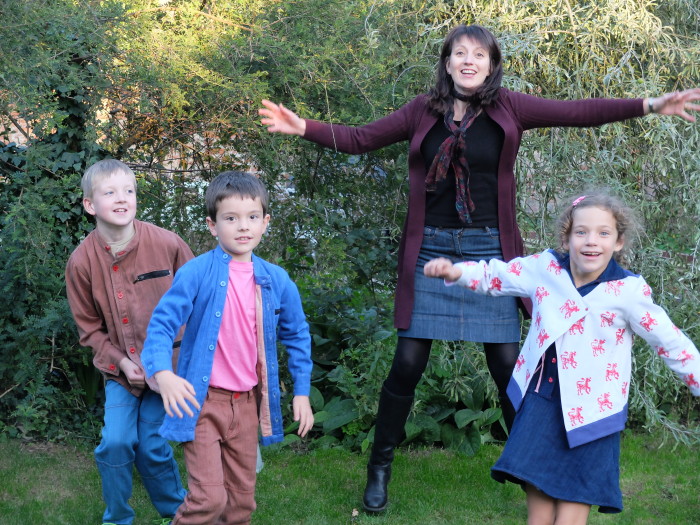Your Garment Stories
C34DB5W – The Story of your Ant Scarf from Where Does It Come From?
The seeds from all the cotton are removed – this process is called ginning. The fluffy cotton balls are now processed and turned into slivers.
3. Spinner’s Story
My name is Sumanben, Jay Mataji!!
I have worked on many handicrafts to earn some money, sitting at home. I have always worked. I used to stick colorful studs on bangles before. I used to make bag parts too. Now for last few years I am spinning yarns!! The work is regular and I work hard.
A couple of years ago they replaced our old Ambar charkha with new, better ones at free of cost. The new ones are better and the production is good quality. I had a problem with one of the spindles of my Charkha last week and the person came the next day to repair it! We get very good support that is very good.
Sumanben works with two of her neighbours who have also been spinning cotton for Where Does It Come From? They are part of a community which does not encourage women to go out to work, so they can spin from their home and earn money to supplement their family income.
4. Weaver’s story
My name is Jyotsnaben. Namaste!
I come from the weaver’s family and I learnt weaving at home. It was a pit loom. Now I have learnt to weave on paddle loom. I do not have a place to keep the loom in my house and for years I have been coming to the co-op and use their loom instead! I do not live far so it helps!! The weaving and spinning center stays open from 8.00 in the morning till 6.00 in the evening. After finishing the housework, I can come only at 9.30 / 10.00! This is not like a factory. I can come at my time and get paid for the length of fabric I weave. Of course, I want to do more so that I get paid more!!
My husband works on the building site on a daily wage basis. He is a bricklayer.
My eldest son is also a weaver and he goes to weave traditional silk ‘patola’. It requires clean and perfect craftsmanship and he gets paid well. I am very happy with it!!
D – Design by MORALFIBRE
MORALFIBRE has been a production partner with Where Does It Come From? since the beginning! Together we created some beautiful, organic shirts in Summer 2015 with blockprinted animals – the blocks being created especially. Jo wanted to use the same blocks for scarves for Christmas 2015 using vibrant colours and unique patterns and this is how we designed your Ant Scarf.
After few days of design explorations and brainstorming, Sanjay and Shailini developed several sketches of stoles and sent them across to Jo. An iterative process followed with ideas being exchanged and updates made, until everyone was happy with the results! The new designs are unique, interesting and beautiful – plus they complement the existing range of scarves already on sale.
Production:
Suitable fabrics were selected and they went for dying first. After that edges were done and then they were block printed in different designs!
Sanjay says, “I really enjoyed working on this project. In spite of us spending time in planning and designing on paper, we had to make some changes to the design on block printing table to give full justice to the special technique! It was new learning and fun!”
B – BLOCKPRINT
For block printing, wooden blocks with patterns of a elephants, ants, tigers and tortoises were made by Ramratan. These were hand carved especially for Where Does It Come From? Meet Ramratan, the block maker…..
“Ram ram! I have migrating from Uttar Pradesh in 1985 in search of livelihood. I came to Ahmedabad. I have been working with wood from childhood as that is our family craft.” Sanjay, the designer at MORALFIBRE said, “Ramratan analyzed the ongoing demand of block printed fabrics at that time and decided to translate all his skill of wood carving in block making. He decided to work as a background artist in textile where the hand carved wooden blocks are not seen but the printed designs do!! His career used to flourish in those days.”
After 30 years of textile advancement this hidden artisan’s work was at risk. Ramratan came up with a totally dynamic approach to wood carving. Putting aside his traditional motifs and patterns and with the help of designers, he now carves contemporary blocks such as Ant, Tortoise, Tiger and Elephant!
5 Printer’s story
I am Tahirbhai. Salaam Alaikum!
I hail from five-generation block printer’s family from Rajasthan. May be more but we do not have more concrete evidence of our family history!! My whole extended family is in this craft.
About fifteen years ago I moved to Ahmedabad, Gujarat to expand our work and try my luck. Ahmedabad is also a large printing hub of India. I moved to my uncle’s printing workshop based here. I took some time to understand the different taste in print design, colours etc here. We used to work on export orders only while here there is a huge local market. Also the way of working: doing business was very different. After some time I started on my own. My expertise is in hand block printing. For hand screen-printing orders, I work with another printing unit.
Last year we had to close our hand block-printing unit. The orders were slowing down. I was not sure whether to continue with hand block printing or to move to hand screen-printing?! Moralfibre got in touch with us just around that time and they were interested only in hand block printing!! With orders coming in from them, I opened my hand block-printing unit again. I have a collection of over 5000 blocks and I want to continue with this beautiful craft.
W – WHERE DOES IT COME FROM?
Hi I’m Jo, the founder of Where Does It Come From? – the award winning clothing business that brings you ethical and traceable clothes. Currently based in Ipswich, Suffolk (UK) we work closely with our partners in India and Africa to create and develop the designs to ensure that the wonderful fabrics are made into garments that will work for you and your children. We hope that finding out about how your clothes were made and the people who made them will make you love them just a little bit more…..
From idea to business launch took two years, with launch happening in June 2014. You can read more in our Blog section, including newspaper and radio coverage. It’s been wonderful to be acknowledged for our work with a number of awards and accreditations.
Thank you so much for buying from us – the more we sell the more difference we can make. We have lots of plans for new designs, new partners and new projects so stick with us and together we can change the world!

